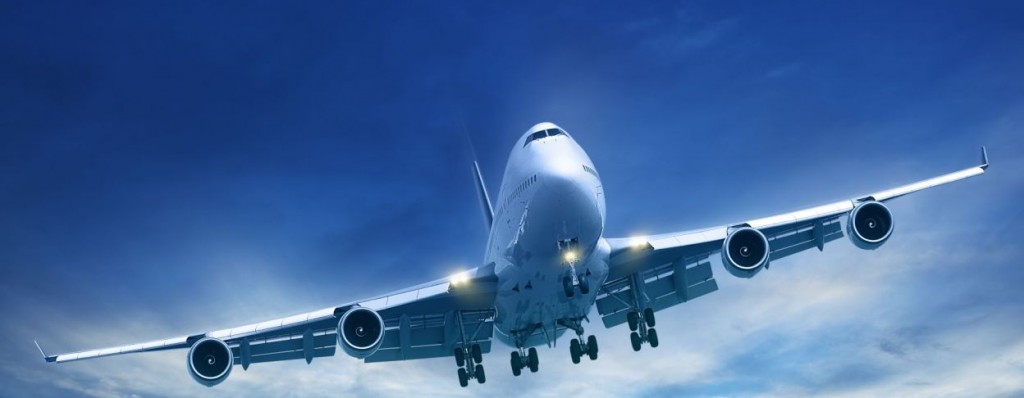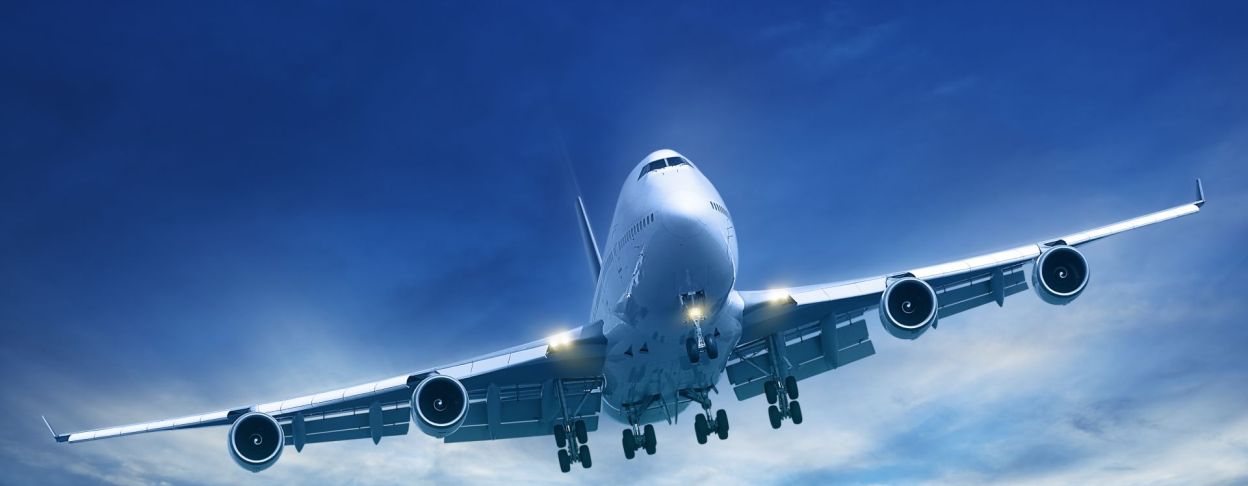The International Air Transport Association (IATA) released its first 20-year passenger growth forecast, projecting that passenger numbers are expected to reach 7.3 billion by 2034. That represents a 4.1% average annual growth in demand for air connectivity that will result in more than a doubling of the 3.3 billion passengers expected to travel this year.
Among the highlights of the report is the expectation that China will overtake the United States as the world’s largest passenger market (defined by traffic to, from and within) by 2030. Both markets, however, are expected to remain the largest by a wide margin.
In 2034, flights to, from and within China will account for some 1.3 billion passengers, 856 million more than 2014 with an average annual growth rate of 5.5%. Traffic to, from and within the US is expected to grow at an average annual growth rate of 3.2% that will see 1.2 billion passengers by 2034 (559 million more than 2014).
The report, the first from the new IATA Passenger Forecasting service, produced in association with Tourism Economics, analyzes passenger flows across 4,000 country pairs for the next 20 years, forecasting passenger numbers by way of three key demand drivers: living standards, population and demographics, and price and availability.
Future Growth Trend Highlights
• By 2034, the five fastest-increasing markets in terms of additional passengers per year will be China (856 million new passengers per year), the US (559 million), India (266 million), Indonesia (183 million) and Brazil (170 million).
• Eight of the ten fastest-growing markets in percentage terms will be in Africa with Central African Republic, Madagascar, Tanzania, Burundi and Kuwait making up the five fastest-growing markets.
• In terms of country-pairs, Asian and South American destinations will see the fastest growth, reflecting economic and demographic growth in those markets. Intra-Pakistan, Kuwait-Thailand, United Arab Emirates (UAE)-Ethiopia, Colombia-Ecuador and intra-Honduras travel will all grow by at least 9.5% on average for the next 20 years, while Indonesia-East Timor will be the fastest growing pair of all, at 14.9%.
“It is an exciting prospect to think that in the next 20 years more than twice as many passengers as today will have the chance to fly. Air connectivity on this scale will help transform economic opportunities for millions of people. At present, aviation helps sustain 58 million jobs and $2.4 trillion in economic activity. In 20 years’ time we can expect aviation to be supporting around 105 million jobs and $6 trillion in GDP,” said Tony Tyler, IATA’s Director General and CEO.
While improving living standards, population and demographics, and price and availability create the conditions for improved demand, there is potential for policy-induced obstacles to hinder the development of connectivity. “Meeting the potential demand will require government policies that support the economic benefits that growing connectivity makes possible. Airlines can only fly where there is infrastructure to accommodate them. People can only fly as long as ticket taxes don’t price them out of their seats. And air connectivity can only thrive when nations open their skies and their markets. It’s a virtuous circle. Growing connectivity stimulates economies. And healthy economies demand greater connectivity. The message of this forecast is that there is great potential if all aviation stakeholders—including governments—play their role,” said Tyler.

The aviation industry recognizes that air travel has an environmental impact, and is committed to reducing its carbon footprint. In 2009, the industry agreed three targets which will ensure that aviation plays its part in ensuring a sustainable future.
• 1.5% annual fuel efficiency improvement to 2020
• Capping net emissions through carbon-neutral growth from 2020
• A 50% cut in net emissions by 2050, compared to 2005.
Analysis of the 10 largest air passenger markets defined by traffic to, from and within for the period 2014-2034:
• The United States will remain the largest air passenger market until around 2030, when it will drop to number 2, behind China. Cumulatively over the next 20 years the US will carry 18.3 billion more passengers and China 16.9 billion.
• Currently the ninth largest market, India will see a total of 367 million passengers by 2034, an extra 266 million annual passengers compared to today. It will overtake the United Kingdom (148 million extra passengers, total market 337 million) to become the 3rd largest market around 2031.
• Reflecting a declining and ageing population, Japanese air passenger numbers will grow just 1.3% per year and decline from the 4th largest market in 2014 to the 9th largest by 2033.
• Germany and Spain will decline from 5th and 6th position in 2014 to be the 8th and 7th largest markets respectively. France will fall from 7th to 10th while Italy will fall out of the top 10 altogether in around 2019.
• Brazil will increase passenger numbers by 170 million and rise from 10th to 5th. Its total market will be 272 million passengers.
• Indonesia will enter the top ten around 2020 and attain 6th place by 2029. By 2034, it will be a market of 270 million passengers.
Regional Growth Highlights
• Routes to, from and within Asia-Pacific will see an extra 1.8 billion annual passengers by 2034, for an overall market size of 2.9 billion. In relative terms it will increase its size compared to other regions to 42% of global passenger traffic, and its annual average growth rate, 4.9%, will be the joint-highest with the Middle East.
• The North American region will grow by 3.3% annually and in 2034 will carry a total of 1.4 billion passengers, an additional 649 million passengers a year.
• Europe will have the slowest growth rate, 2.7%, but will still cater for an additional 591 million passengers a year. The total market will be 1.4 billion passengers.
• Latin American markets will grow by 4.7%, serving a total of 605 million passengers, an additional 363 million passengers annually compared to today.
• The Middle East will grow strongly (4.9%) and will see an extra 237 million passengers a year on routes to, from and within the region by 2034. The UAE, Qatar and Saudi Arabia will all enjoy strong growth of 5.6%, 4.8%, and 4.6% respectively. The total market size will be 383 million passengers.
• Africa will grow by 4.7%. By 2034, it will see an extra 177 million passengers a year for a total market of 294 million passengers.
Analysis of Domestic Air Passengers Markets
• The fastest-growing domestic market will be China, which will grow at 5.6% per year and by 2034 will account for 1.0 billion passengers (691 million additional domestic passengers compared to today).
• The United States domestic market will expand by 3.2% per year, to 822 million passengers, an additional 384 million passengers annually compared to 2014.
• The Indian and Brazilian domestic markets will grow at 6.9% and 5.4% respectively. India will be adding 159 million extra passengers and Brazil 147 million. Their total domestic air markets will be 215 million and 226 million.
• Indonesia will be the fifth largest domestic market. It will grow at 6.4%, adding an extra 136 million passengers a year by 2034. The total Indonesian domestic market will be 191 million.
• The remaining top ten domestic markets will be Turkey (annual growth of 5.3%), Philippines (5.9%), Mexico (4.6%), Colombia (6.0%), and Vietnam (6.2%).
Explanation of Demand Drivers
The Global Passenger Forecast Report explains future trends in passenger numbers by means of three key demand drivers: living standards, population and demographics, and price and availability.
• Living standards have a known effect on the propensity to fly. Countries on a growth curve up to approximately US$20,000 per capita see correspondingly faster increases in the number of flights taken per person per year.
• Population and demographics reflects not just population trends over the next 20 years but also measures such as the old-age dependency ratio. On these measures, countries such as Japan, Russia, and Ukraine are expected to undergo significant population decline. African nations, on the other hand, are set for rapid population growth. Typically, the nations with growing populations also have younger populations, and working-age groups are more likely to fly than over-65s.
• Price and availability looks to predict future trends of the price of air travel and the extent of future air connectivity. The unit cost of air transport has fallen by a factor of four since 1950. However, the past decade has seen prices bottom out, largely due to the increased cost of oil. In the coming two decades, the downward trend in the real cost of air travel is expected to resume, at a rate of around 1 – 1.5% per year. Air connectivity is expected to increase with the addition of new longer-range mid-size aircraft. Greater liberalization of air markets has the potential to increase global air traffic growth by over 1 percentage point per year.
“In the year that marks the 100th anniversary of commercial air transport, it is fitting that the most comprehensive long-range forecast of future air passenger trends is released. After a century of growth that has taken us from 1 passenger to 3.3 billion passengers this year, air transport is set to generate even more economic growth, employment, and cultural and educational opportunities.
The first century of air travel has seen about 65 billion passengers take to the sky. The next 65 billion will fly in just the next 20 years,” added Tyler.
Airline Business Confidence Survey (October 2014)
• Airline profit expectations for the year ahead are positive and there has been an improvement in recent performance, according to IATA’s quarterly survey of airline CFOs and heads of cargo in October;
• Recent past financial performance has started to improve again compared to a year ago, after no gains in Q2, and the outlook remains positive which suggests there will be further growth in profitability;
• The survey indicates that falling inputs costs and stronger growth in traffic volumes are responsible for better recent financial performance as well as the positive outlook;
• Respondents reported seeing a decline in input costs in Q3, largely due to a fall in crude oil prices over recent months, and expect the trend to continue during the year ahead, which is consistent with the positive outlook for profitability;
• Both passenger and cargo volumes were reported to have expanded during Q3, reflecting improvement in the demand environment after weakness in early 2014;
• There is also confidence that air transport volumes will continue to expand over the next 12 months, supporting the expectation for profit improvements during the next 12 months;
• Although respondents continue to report declines in yields, downward pressure eased in Q3 for both businesses, and no further weakness in yields is expected for the year ahead;
• Airline employment activity is reported to have been stable in Q3 compared to a year ago, and no growth is expected for the year ahead
The Airlines Financial Monitor (September 2014)
• Q2 financial results show continued improvement, driven by US carriers;
• But worldwide airline share prices fell 4% in September, reflecting investor concerns over weak economic data in some regions and the spread of the Ebola virus;
• Jet fuel prices eased further in September as increased supply and a fragile demand outlook pushed crude oil prices down to levels not seen since mid-2012;
• US passenger yields remain up on a year ago, but weakness continues in other regions;
• Air travel volumes continue to expand strongly and the trend in air freight volumes remains positive, supported by improving conditions in Asia and the US, including a rebound in trade volumes;
• Growth in available seats slowed further in August to an annualized rate of 3.5%, below expansion in demand;
• Passenger load factors rose on the back of strong expansion in volumes, but air freight load factors eroded some of the improvement in previous months with a 0.4% fall in August compared to July
The Airlines Financial Monitor (August 2014)
• Growth in international air passengers improved in August with a rise of 4.5% compared to a year ago, up on the July result of 2.6%. Premium and economy passenger numbers rose at the same rate, 4.5%;
• There was also a strong expansion in passenger numbers between August and July, which counters the negative trend seen in previous months;
• The expansion in passenger numbers is consistent with signs of improving business conditions, after a period of weakness in international trade and business confidence earlier in the year;
• The improvement in international passenger numbers has been supported by strong growth on markets like Europe – Far East (6.7%) and North and Mid Pacific (7.1%). The recent weakening of the Eurozone economy is yet to have an obvious impact on air travel growth;
• By contrast, air travel within Far East and markets connected to South America continue to show weakness;
• Economic and political turmoil in Thailand has damaged tourism demand over recent months and Malaysia air travel has been impacted by tragedies related to the flag carrier;
• The North America – South America market has been hit by capacity cuts to Venezuela as well as weakness in key economies like Brazil and Argentina.










